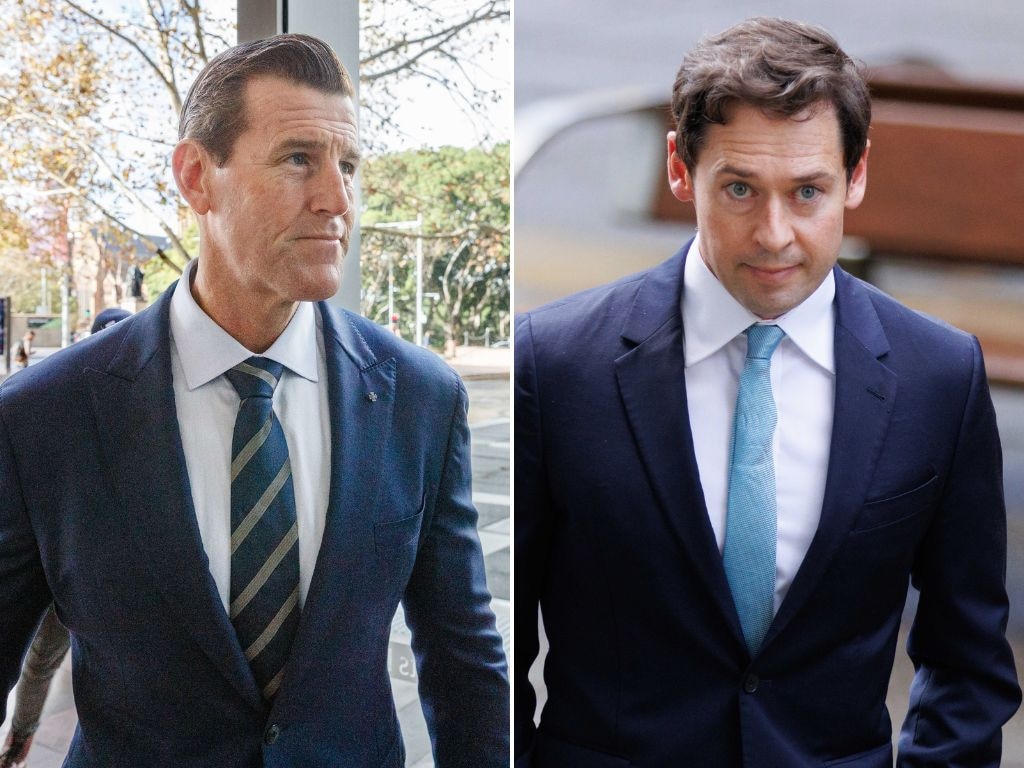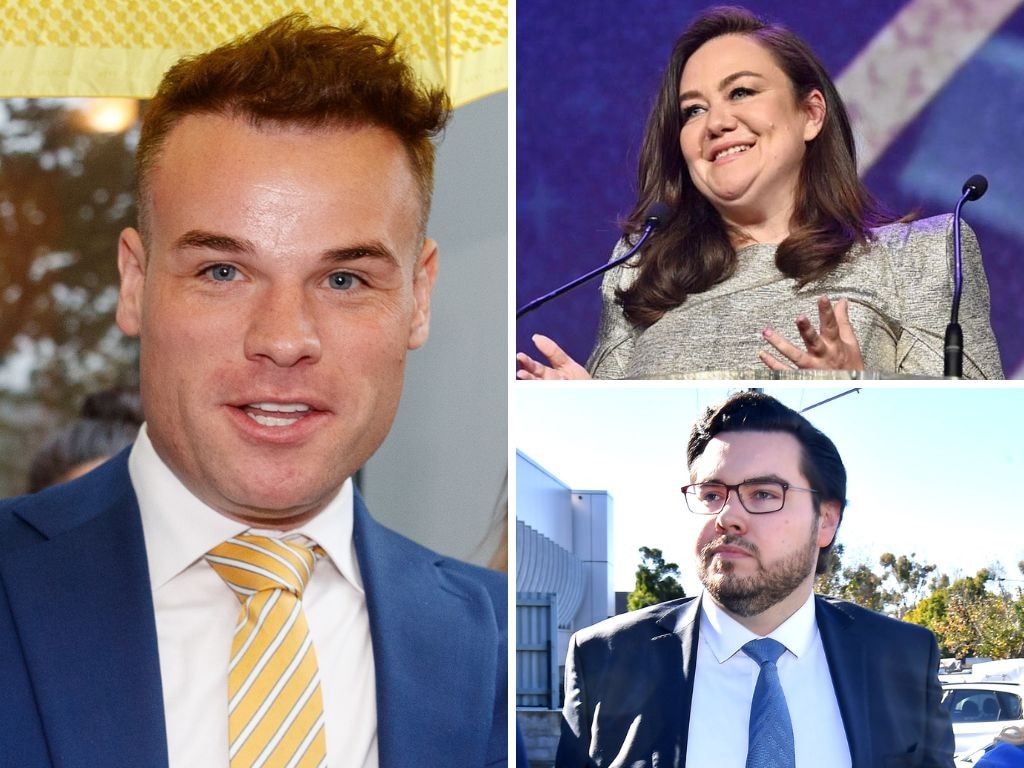TV rich list: Golden era of bumper salaries for presenters comes to an end
A decline in ad revenue means the days of big network contracts are long gone, but our biggest earners still command eye-watering salaries | READ THE LIST

Australia’s biggest television stars continue to command million-dollar deals to front their channels’ top-rating shows, despite a push by commercial networks to bring their newsroom budgets under control.
The exorbitant pay cheques traditionally have been the only way the networks can protect their top-tier talent – developed at great expense across many years – from aggressive headhunting raids by rival outlets in the never-ending battle for eyeballs.
Talent poaching has been such a longstanding concern, the ABC repeatedly has refused to disclose the names and specific salaries of its 151 staff members on more than $250,000 a year for fear it would let commercial stations know how much it would likely cost to convince the public broadcaster’s biggest personalities to defect.
However, the landscape is changing rapidly as the free-to-air broadcasters’ traditional audiences increasingly switch to streaming services and social media for their news and entertainment. The resulting decline in advertising revenues has meant the commercial channels are now more concerned with justifying the cost of retaining their current roster of stars and less with trying to add to their ranks.
Former Channel 10 executive producer and TV Blackbox founder Rob McKnight predicts for many the good times – and great pay – soon will come to an end.
“The days of big network contracts are long gone,” he told The Australian. “With smaller revenues, TV networks can’t afford to have big stars sitting on contracts doing nothing.
“While there are still some exceptions due to historical deals, performers are more likely to be paid on a per show basis. The exception to this rule is news and breakfast shows. As these shows go all year round, hosts are signed up to multi-year contracts.”
The Australian has spent the past week meeting senior executives with intimate knowledge of the country’s highest-profile – and highest-paid – free-to-air network personalities for the inaugural The Australian’s Television Rich List, and indeed the rankings largely are dominated by news and breakfast show personalities.
The Nine Network, once known as “the star factory” for its unrelenting ability to transform young up-and-coming journalists into household names, remains the most generous paymaster, and while women and men are equally represented in the top 10 it is still the male stars who take home the biggest pay packets.
The Today show’s Karl Stefanovic continues to pocket more than three times as much as female co-host Sarah Abo – even though a heated dispute about the lack of gender pay equality led to the departure of his long-time presenting partner, Lisa Wilkinson, in October 2017.
Nine’s one-time chief executive David Gyngell helped make Stefanovic the highest paid personality in Australia in 2015 after fending off entreaties from Seven with a multimillion-dollar deal that also gave the breakfast host his own short-lived panel show, The Verdict, only for it to be scrapped after just eight episodes.
The Today show host is currently on a deal worth $2.8m a year – almost as much as the combined packages of Nine Entertainment’s sitting chief executive, Matt Stanton ($1.6m), and his predecessor Mike Sneesby ($1.5m).
That could soon change with Stefanovic’s accountant, Anthony Bell, locked in negotiations with the network over a new contract.
Seven’s leading lady, Natalie Barr, is Australian television’s highest-paid woman, having successfully made the jump from newsreader to host of Sunrise.
It is another female newsreader, though, who can claim to be the best-paid presenter in the country pro rata, with Nine’s Georgie Gardner pocketing $600,000 a year to read the news in Sydney on Friday and Saturday nights each week.
The deal is a legacy from the popular anchor’s ill-fated one-year reign as co-host of the Today show, alongside Deborah Knight, in Stefanovic’s absence – though there is a question mark over how much longer Gardner’s generous package will last given her contract is up for renewal next year.

Senior network sources told The Australian that, given falling free-to-air revenues, there were mounting pressures at all the commercial broadcasters to reduce wage bills and many big names were being asked to take pay cuts.
One Nine insider said the contracts of every single one of the network’s stars was effectively “under review”.
“It’s not a matter of the ‘evil bean counters’ being out of control any more,” the executive said. “After spending years and countless thousands promoting network talent, you don’t want to lose any one of them – but the truth is we can’t keep everyone on, and keep everyone on what they’re currently on.
“Every dollar of every deal needs to be justifiable to the shareholders and the market – the term that we’re using is ‘market value’ – and unfortunately, in the current market, most on-air talent just aren’t valued at those amounts any more. There is still some poaching between the networks, but it’s for $10,000 or $20,000 pay rises for people on much smaller salaries, and not up at the top end of the table.”
McKnight agreed and warned that far from expecting pay rises, TV stars should prepare themselves to take a pay cut when it was time to renegotiate network deals.
“Anyone about to re-sign should be warned they will most likely be facing a pay cut,” he said. “We’ve already seen some big names in morning TV take a cut and that is only going to continue.
“There are fewer options now for TV presenters, so playing hardball is only going to see you out of work. At this time you either have to accept a pay cut or you’ll be pushed out of the industry.”
The situation has been exacerbated further by the new generation of stars coming through, looking to replace the current crop of network names.
It has been a particular problem at Nine, where director of television Michael Healy has been loath to lose any of his top talent – but found it impossible to keep his three heaviest hitters, Liz Hayes, Tracy Grimshaw and Tara Brown, in the face of cutbacks.
The trio have long been among the network’s brightest stars, but Grimshaw appeared in only one 60 Minutes story last year and a four-part health special, while Hayes and Brown’s $500,000 deals on 60 Minutes were double the amount the show was paying rising stars Dimity Clancey and Amelia Adams.
The situation came to a head for Hayes last year after the channel axed her true crime series Under Investigation with Liz Hayes due to aggressive cost-cutting. The network veteran eventually announced in February she was parting ways with the station after 44 years.
Still, some insiders say there is plenty of money to be made by the industry’s top earners. And while Nine News Brisbane’s newly announced 6pm news anchor, Joel Dry, made the switch from Seven for just $250,000, industry sources said network salaries were just the starting point for a star’s earning capacity – not least because a plum TV position opens up opportunities to supplement incomes with product endorsements and speaking engagements.





To join the conversation, please log in. Don't have an account? Register
Join the conversation, you are commenting as Logout